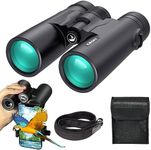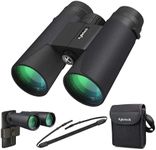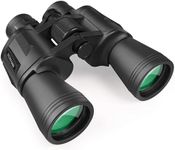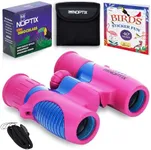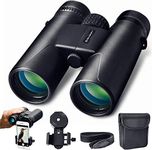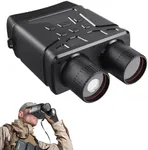Buying Guide for the Best Audubon Binoculars
Choosing the right binoculars can greatly enhance your birdwatching experience. The right pair will offer clear, bright images, be comfortable to use, and suit your specific needs and preferences. When selecting binoculars, consider the following key specifications to ensure you make the best choice for your birdwatching adventures.MagnificationMagnification refers to how much closer the binoculars can make an object appear. For birdwatching, a magnification of 8x or 10x is generally ideal. 8x magnification provides a wider field of view, making it easier to spot and follow birds, while 10x magnification offers more detail but a narrower field of view. Choose 8x if you prefer a broader view and easier tracking, and 10x if you want to see more detail from a distance.
Objective Lens DiameterThe objective lens diameter is the size of the front lenses, measured in millimeters. This spec affects the brightness and clarity of the image. Larger diameters (e.g., 42mm) gather more light, providing brighter images, especially in low-light conditions. Smaller diameters (e.g., 32mm) are lighter and more compact but may not perform as well in dim lighting. If you often birdwatch in early morning or late evening, opt for larger lenses. For daytime use and portability, smaller lenses are sufficient.
Field of ViewField of view is the width of the area visible through the binoculars, usually measured in feet at 1000 yards. A wider field of view allows you to see more of the landscape and makes it easier to locate and track birds. Binoculars with a field of view around 350-400 feet are ideal for birdwatching. If you prefer scanning large areas or tracking fast-moving birds, prioritize a wider field of view.
Close FocusClose focus is the shortest distance at which binoculars can clearly focus on an object. For birdwatching, a close focus of 6-8 feet is generally good. This spec is important for observing birds at close range, such as those visiting feeders or perched nearby. If you enjoy watching birds up close, look for binoculars with a shorter close focus distance.
Eye ReliefEye relief is the distance between your eyes and the binoculars' eyepieces while still seeing the full image. This is crucial for eyeglass wearers, as longer eye relief (15-20mm) allows comfortable viewing without removing glasses. If you wear glasses, ensure the binoculars have sufficient eye relief for a clear and comfortable view.
Weight and SizeWeight and size affect the comfort and portability of binoculars. Heavier binoculars can be tiring to hold for long periods, while lighter models are easier to carry and use. Compact binoculars are convenient for travel but may compromise on image quality. Consider how long you'll be using them and whether you'll be carrying them for extended periods. Choose a balance between comfort and performance based on your birdwatching habits.
Durability and WeatherproofingDurability and weatherproofing ensure your binoculars can withstand outdoor conditions. Look for models with waterproof and fog-proof features to protect against rain and humidity. Rubber armor provides shock resistance and a better grip. If you often birdwatch in varying weather conditions, prioritize binoculars with robust construction and weatherproofing.
